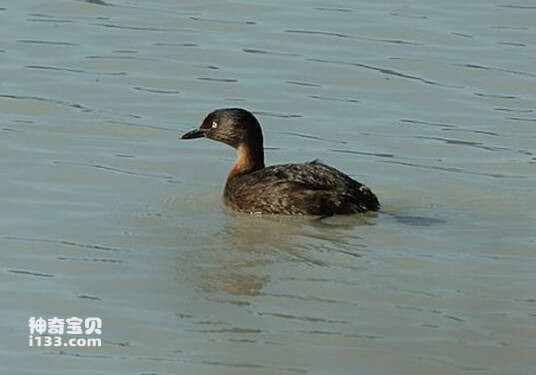Poliocephalus rufopectus
IUCN
LCBasic Information
Scientific classification
- name:Poliocephalus rufopectus
- Scientific Name:Poliocephalus rufopectus,New Zealand Grebe
- Outline:Waterfowl
- Family:
Vital signs
- length:No textual research information is available
- Weight:No textual research information is available
- lifetime:No textual research information is available
Feature
Distribution and Habitat
It is found in Australia and New Zealand (including Australia, New Zealand, Tasmania and nearby islands).
Living in freshwater lakes, swamps in the plant cluster, almost life in the water, often cluster living.
Appearance
The New Zealand grebe is a swimming bird that, like the rest of the Grebe family, is a highly social waterbird. Most of the body is black and brown, and silver feathers appear like threads under the body feathers, which is very special. The chest and neck are maroon in tone, and below the abdomen are silvery black. He has pale yellow eyes and a black beak. The male is larger than the female. The juvenile plumage is slightly lighter, and the juvenile has irregular white, brown, and black stripes on its head and neck. The New Zealand grebe is not suitable for life on land, but they are amazing swimmers and divers.
The New Zealand grebe has a straight, flat, pointed beak; The nostrils are open and located near the base of the mouth; The wings are short, with 12 primary feathers, the first remains, and the fifth secondary feathers missing. The tail has only a few short soft feathers, or almost no feathers. Place your feet near your hips. Flat tarsus, suitable for diving; Each of the fou
Details
The New Zealand Grebe, Poliocephalus rufopectus, or New Zealand grebe, is a swimming bird that, like other members of the Grebe family, is a highly social waterbird.

The New Zealand grebe is not good at flying. They use their feet instead of wings and rarely walk on the ground. Can dive for food, generally diving only 1-4m deep. Food is mainly aquatic insects and larvae, crustaceans, mollusks, small fish and grass.
The New Zealand grebe breeds by building floating nests in the grass near the water, made of reeds, weeds, and some clay. Each egg is produced 2-7, white, mostly stained by dirt. The male and female incubate the eggs in turn. The eggs hatch for about 25 days. The young are early sex, the body is densely feathered, can move freely, in the chicks hatched 2-3 weeks time, the parent birds often put the chicks on the back, frightened diving they are under the wings.
Protect wild animals and eliminate wild meat.
Maintaining ecological balance is everyone's responsibility!








